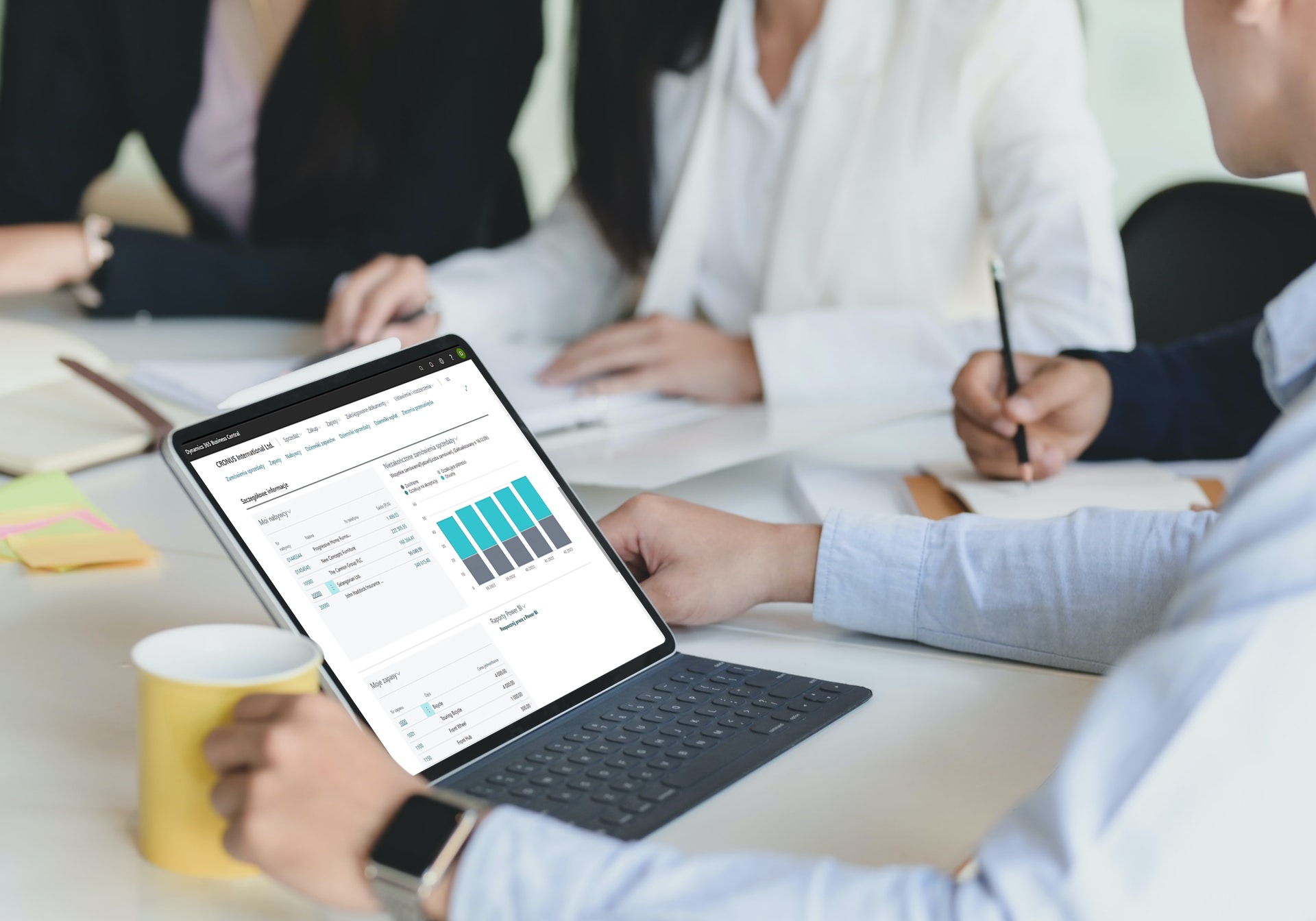Dynamics 365 Business Central is a very comprehensive system for managing finances and accounting. The user receives a full set of functionalities allowing to manage all typical financial processes. These include among others accounting for financial transactions, preparing financial statements, managing bank accounts and managing fixed assets.
Plan of the accounts
The chart of accounts is a list of accounts containing balance sheet accounts and profit and loss accounts. The chart of accounts can be used to post transactions to the general ledger. As part of Business Central, the user gets access to advanced functions related to the management of the chart of accounts. Different bank accounts can be defined depending on the specific needs of the organization (e.g. multi-currency accounts).
Processing payments
Business Central covers all payment processing needs in a comprehensive manner. The user can very quickly and conveniently mark the invoice as paid and perform account reconciliation. An important part of payment processing is the payment reconciliation journal, which allows you to reconcile transactions from your bank statement. For this purpose, it is enough to import bank statement files for the system to automatically settle the transactions. In the system, it is possible to define templates of accruals, which enables the settlement of finances within a specific schedule.
Budget management and maintenance of fixed assets
Dynamics 365 Business Central enables a number of functionalities related to budget management. Budget management concerns, among others, general ledger accounts, selling and purchasing costs.
The user can control fixed assets and related transactions (acquisition, depreciation, decrease or increase in value, liquidation). It is possible to draw up a full annual depreciation plan that provides for the depreciation costs of fixed assets in the selected period.
Advanced financial analysis
In addition to reporting, dimensions are primarily used to perform advanced financial analysis. It is possible to look at finances defined by the dimensions assigned to buyers, vendors, orders, resources and many other variables. As a result, it is possible to make various types of forecasts, including cash flow forecasts. This helps predict sales orders, purchase orders, and payment scheduling. The analyzes use machine learning based on the history of revenues, expenses and other financial data.
- The full list of functionalities is available in the official Microsoft materials: https://docs.microsoft.com/en-us/dynamics365/business-central/finance
- More information about Dynamics 365 Business Central functionalities: https://dynamicseip.com/en/about-product/functionalities/
